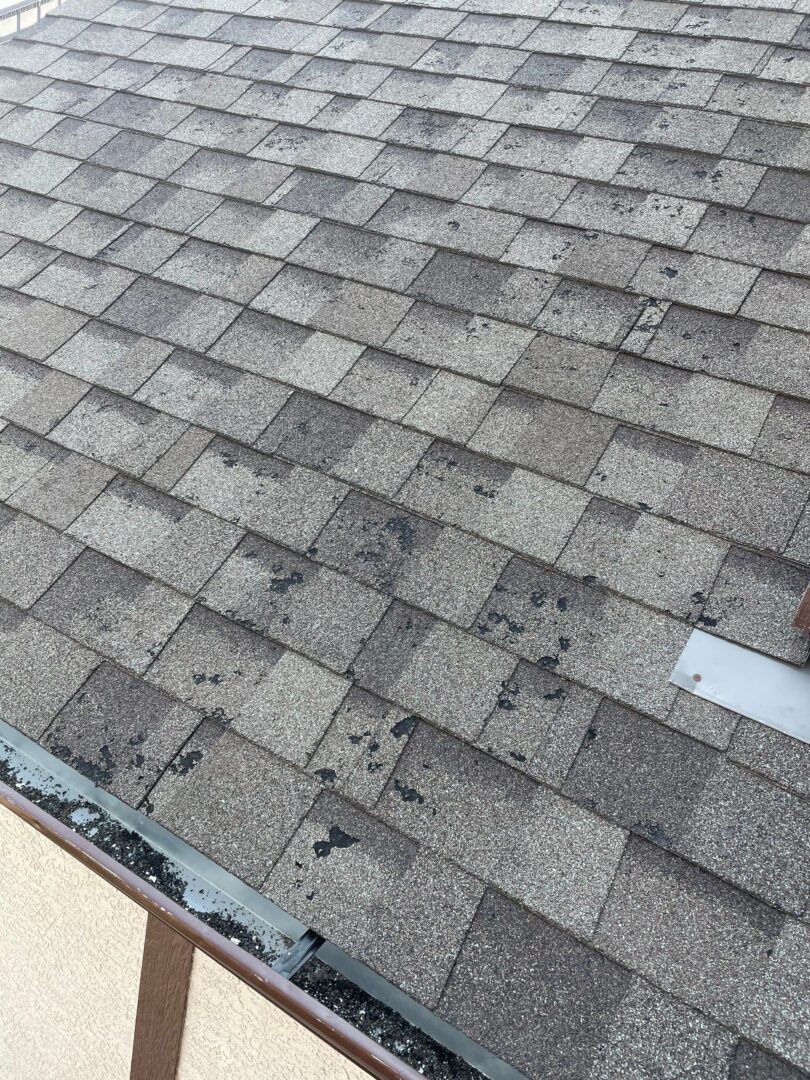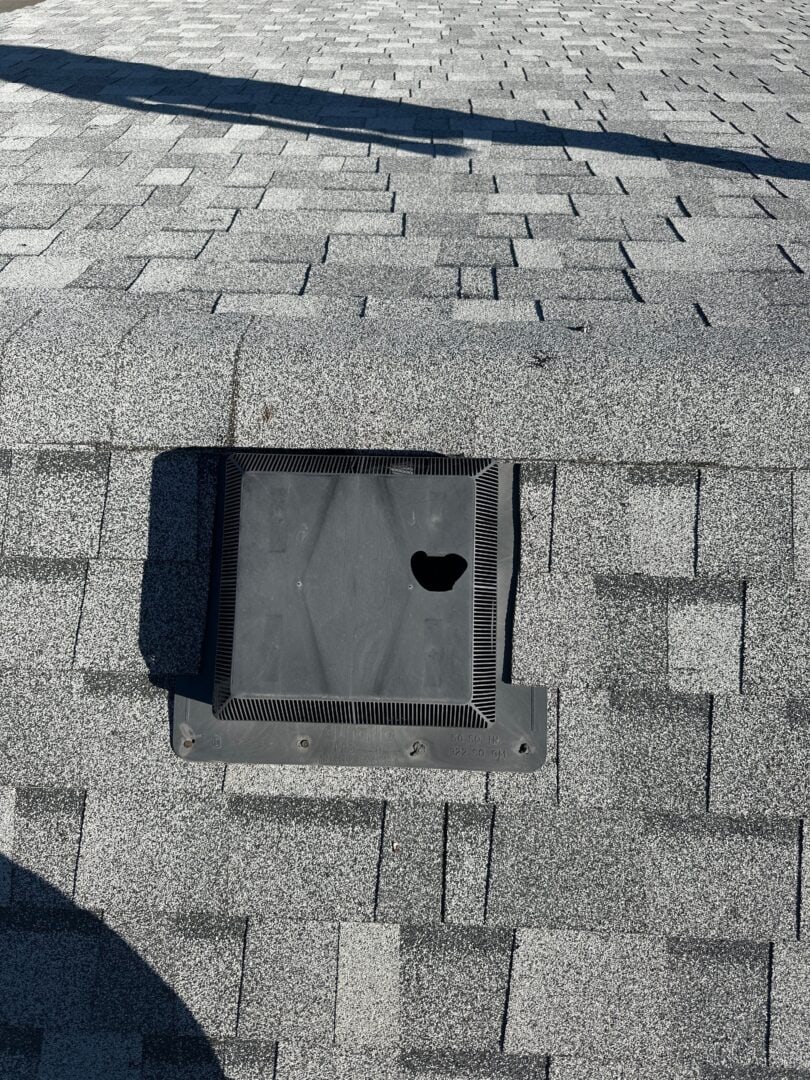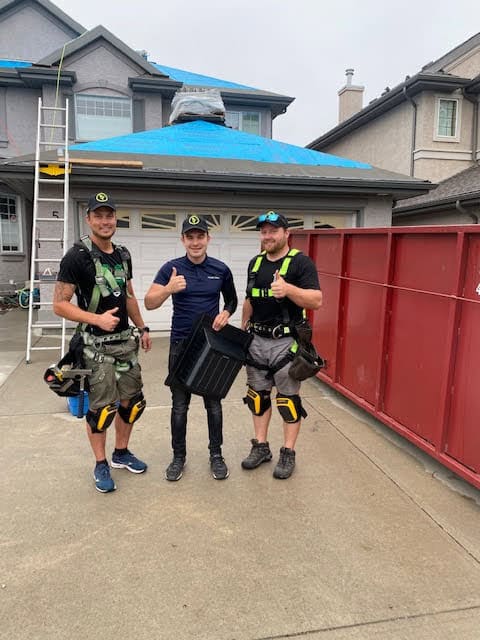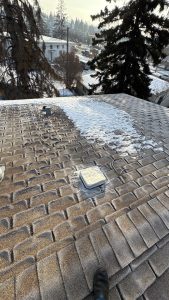Every few years, Calgary gets hit with a hailstorm that leaves a trail of damaged roofs, dented cars, and Calgary hailstorms strike hard and often, causing damage that’s not always visible until it becomes a costly problem. While hail dents on your car are easy to spot, the impact on your roof can go unnoticed — and that’s where the real trouble begins.
This guide is designed to help Calgary homeowners understand exactly how hail damages roofs, how to safely inspect after a storm, what to expect from the insurance process, and how to protect your home long-term with hail-resistant roofing systems.
Whalley’s Four Seasons Roofing has helped thousands of Calgary homeowners repair, replace, and reinforce their roofs after major weather events. In this guide, you’ll learn:
- What hail damage really looks like on a roof
- What to do after a storm and how to document damage
- How to avoid roofing scams and insurance missteps
- What roofing products stand up best to Calgary’s climate
Let’s get into it — because a strong, storm-ready roof starts with the right information.
What Hail Actually Does to Your Roof
When hail hits, the damage isn’t always obvious — but that doesn’t mean it’s harmless. Even if your shingles look intact from the ground, small impacts can weaken the materials and shorten your roof’s lifespan.
Here’s how hail damages different parts of your roofing system, and what signs to look for:

Asphalt Shingles
Hail can do more than just knock granules loose — it can bruise, crack, or puncture your shingles.
- Granule Loss: You might notice dark spots or bare patches where protective granules have been knocked off. This exposes the black asphalt layer underneath and accelerates wear.
- Bruising: Subtle dents may not look severe, but when you press them, they’ll feel soft or spongy. That means the mat underneath has been compromised.
- Cracking: Larger hailstones can cause shingles to split. Cracks might run in a straight line or appear as circular fractures around the point of impact.
These issues weaken your roof’s waterproof barrier and can lead to leaks, mold, and energy loss over time — especially after the next freeze-thaw cycle or chinook.

Soft Metal and Plastic Components
Soft Metal and Plastic Components
Before inspecting your shingles, start with the softer parts of your roof — this is often where hail damage is easiest to spot.
- Roof vents
- Flashing
- Valleys and ridge caps
These areas tend to show dents, dings, or pitting from hail impact. If you see visible damage here, it’s a strong indicator that your shingles may also have been compromised and should be checked by a professional roofing contractor.
Roof Edges and Ridge Caps
Because of their shape, ridge caps and roof edges take more direct hits during a storm. Inspect these high points for cracks or lifted shingles — they’re often the first to go.
Tip: Pair This With a Wind Inspection
Hail usually comes with high winds, which can lift shingles or drive rain sideways into your attic. If you’re checking your roof after a storm, be sure to look for wind damage too.
Check out our Calgary wind damage guide here
What to Do After a Hailstorm — From Inspection to Insurance
The hours and days after a hailstorm can be overwhelming, especially if you’re not sure whether your roof is damaged or how to begin the insurance process. This section walks you through the steps to take, what to avoid, and how to protect yourself financially and structurally.
Step 1: Check for Obvious Damage — Safely
Start with a ground-level inspection. Look for:
- Dented gutters, downspouts, or air conditioning units
- Shingle granules in your eavestroughs or on the ground
- Visible damage to siding, windows, or soft metals on the roof
If you notice any of these signs, it’s time to arrange a closer look — either with a professional or, if you’re comfortable and safe doing so, a careful rooftop inspection.
Step 2: Document Everything
Take clear photos of:
- Any visible roof damage
- Other exterior elements (siding, fence, patio, etc.)
- The date and time of the storm (from weather apps or security cams if needed)
This documentation will help support your insurance claim and give contractors a clearer picture of the storm’s impact.
Better yet — let us handle it.
Whalley’s offers full post-storm inspections that include photos, notes, and a detailed damage report you can submit to your insurance provider. It’s peace of mind with no guesswork.
Step 3: Know When Permits Actually Matter
For most hail-related roof damage, you won’t need a permit. Replacing shingles, flashing, siding, or other exterior materials is considered minor repair work — no permit required, as long as you’re not altering the structure itself.
Structural permits might be necessary if there’s major damage to the roof framing or supporting deck. But realistically, that’s uncommon unless your home took a severe hit — like giant hailstones or fallen trees.
If you’re not sure, don’t stress — we’ll flag anything during your inspection that could require a second look.
For more info, you can visit the City of Calgary’s official storm recovery guide:
https://www.calgary.ca/emergencies/recover-from-storm-damage.html

Step 4: Contact Your Insurance Company
After documenting the hail damage, promptly reach out to your insurance provider to initiate the claims process. Here’s what to expect:
- Immediate Reporting: Report the hail damage to your insurance company as soon as possible. Most companies have a deadline for filing claims after an event occurs.
- Claims Process: Your insurer will likely send an adjuster to inspect the damage and estimate repair costs.
- Documentation: Provide all the documentation you’ve gathered, including photos, videos, and any inspection reports. This comprehensive evidence will support your claim and facilitate a smoother 2process.
- Professional Inspection Reports: Engaging a reputable roofing contractor to conduct a thorough inspection can be beneficial. Their detailed reports often align with insurance adjusters’ assessments, ensuring that all damages are accounted for.
- Avoid Premature Repairs: Hold off on committing to any permanent repairs until your insurer has approved them. Undertaking repairs beforehand might complicate the claims process or affect coverage.
For firsthand experiences and additional insights, consider visiting this Reddit discussion on hail insurance in Calgary, where local homeowners share their encounters with insurance claims and the importance of comprehensive coverage.
Step 5: Choose a Contractor You Can Trust
Many out-of-town contractors flood into Calgary after a big storm, promising fast, cheap fixes. Be cautious.
- Check that your roofer has a valid Calgary business license
- Verify their insurance and WCB coverage
- Look for local reviews and long-term presence in the community
Whalley’s has been serving Calgary homeowners for decades and has helped many customers navigate the insurance process from start to finish. If you’re not sure where to begin, we’re happy to guide you.
The Roofing Products We Recommend for Hail Protection
Not all roofing is built to survive Calgary’s storms. After seeing thousands of damaged roofs over the years, we can confidently say: if you live in the hail belt, it pays to invest in materials that are designed to take a hit.
Here are two products we recommend to every homeowner serious about protecting their home long-term — both of which are already trusted in Calgary for their durability and value.
1. Class 4 Impact Resistant Shingles
These shingles are engineered and tested to withstand extreme hail impacts — and they’re a huge step up from standard asphalt.
Benefits:
- Rated to resist cracking, tearing, or splitting from hail impact
- May qualify for discounts with certain insurance providers
- Designed to last longer under Calgary’s extreme freeze-thaw cycles
- Look just like regular shingles — but built tougher
We go into more detail about these materials in our dedicated article:
Class 4 Impact Resistant Shingles – What They Are and Why They Matter →
Note: While Calgary’s rebate program for these shingles has ended, they still remain a smart investment for long-term protection and may be recognized by your insurance provider.

2. Euroshield Rubber Roofing
If you’re looking for the gold standard in hail protection, Euroshield roofing is made from recycled rubber and built specifically for hail-prone regions like southern Alberta.
Why we love it:
- Made in Alberta, for Alberta weather
- Designed to withstand hailstones up to 2 inches in diameter
- Extremely long lifespan and premium curb appeal
Learn more in our storm-focused post here:
Preparing Your Roof for Calgary’s Summer Storms →
Why Invest Now?
Calgary sees a major hail event every few years — and the cost of repeat insurance claims, temporary patches, and emergency fixes adds up fast.
Upgrading to Class 4 or Euroshield roofing can:
- Reduce your insurance premiums
- Increase your home’s resale value
- Provide real peace of mind year after year
If you’re replacing a damaged roof or planning ahead, we can help you choose the right system and work with your insurance provider to maximize your benefits.
Don’t Wait for the Next Storm to Find Out Your Roof Wasn’t Ready
Hailstorms in Calgary are unpredictable — but roof damage doesn’t have to catch you off guard. Whether you’re dealing with the aftermath of a storm or planning ahead to avoid future repairs, the right steps and the right materials make all the difference.
At Whalley’s Four Seasons Roofing, we’ve helped thousands of Calgary homeowners identify damage, navigate insurance claims, and upgrade to roofing that stands up to whatever Alberta weather throws at it. From detailed inspections with photo documentation to professional installations of impact-resistant products, we’re here for the long haul — not just the next storm.
Need help after a hailstorm?
With our Calgary residential roof inspections we’ll inspect your roof, provide a report for your insurance company, and give you honest recommendations — with no pressure, no guesswork, and no shortcuts.
📞 Call us at (403) 288-8819 or visit
https://w4sr.ca/contact
to book your inspection or get a second opinion.


